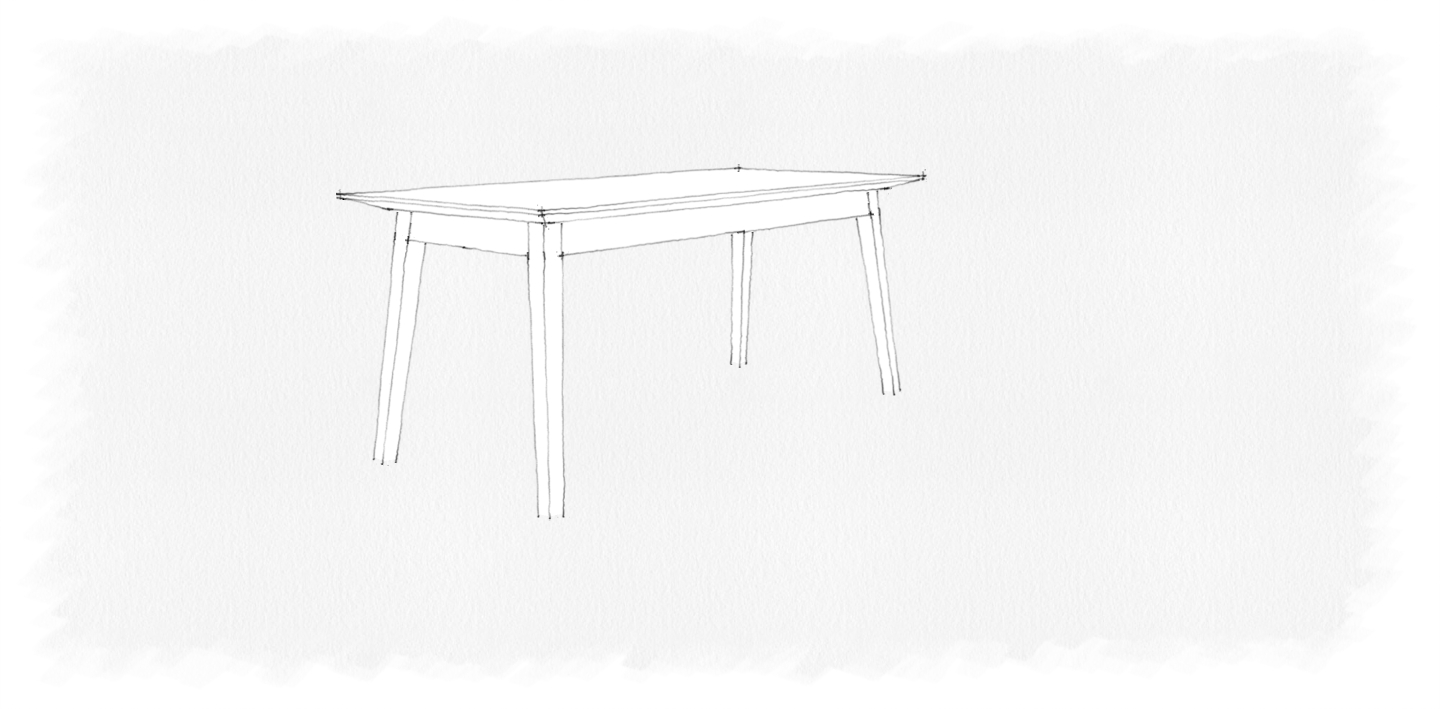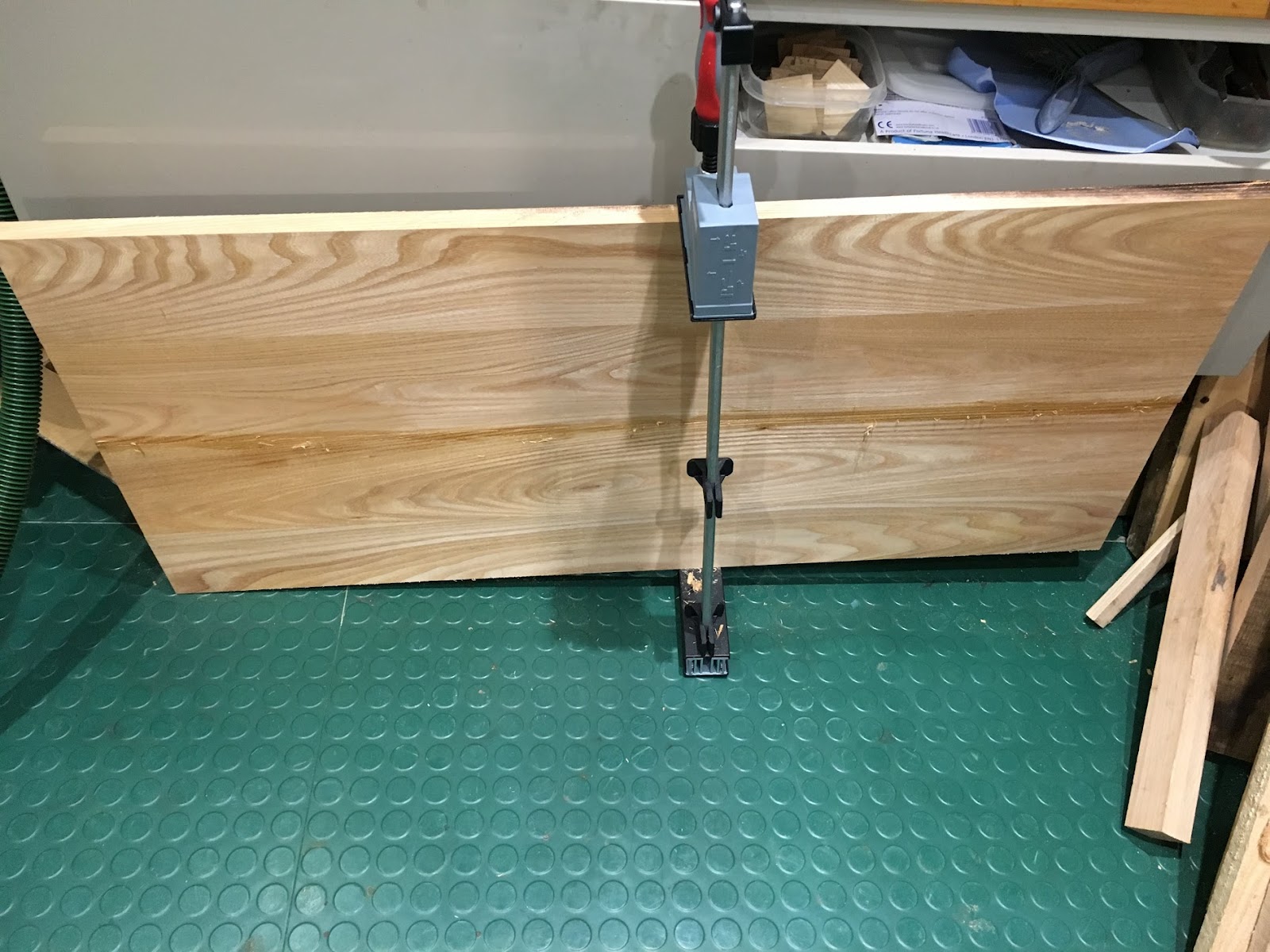Fans of inept woodworking will be excited to hear I have decided to have a go at the coffee table I mentioned here:
coffee-table-design-robust-enough-t108810.html
I have tried to do the design so it is in keeping with the side tables I made, but following comments on the above post I am making it with an apron rather than the halving joint which will in theory be more rigid (I say in theory because this will depend on me doing the joints well, erk).

The top is American Elm - I could only get 5 1/2'' boards so laminated the top in 4 pieces, doing it in two stages. I roughly flattened each pair of boards before gluing the two halves so hopefully not too much work will be needed to finish it. I'm using oak for the legs and everything is being done from rough sawn boards with hand tools so quite a bit of effort went in to preparing the wood

I do quite enjoy the prep work but it is time consuming and adds to the pressure when you are doing something to the first time (in this case, my first mortice and tenon joints) because in the back of your mind is the prospect of another lengthy exercise to get replacements parts ready when/if you **** up. Thus I am seriously thinking about getting one of those bench top bandsaws from Aldi
I have got a bit further along with the joinery now and have a couple of questions about the construction - will do another post later.
toodles
coffee-table-design-robust-enough-t108810.html
I have tried to do the design so it is in keeping with the side tables I made, but following comments on the above post I am making it with an apron rather than the halving joint which will in theory be more rigid (I say in theory because this will depend on me doing the joints well, erk).
The top is American Elm - I could only get 5 1/2'' boards so laminated the top in 4 pieces, doing it in two stages. I roughly flattened each pair of boards before gluing the two halves so hopefully not too much work will be needed to finish it. I'm using oak for the legs and everything is being done from rough sawn boards with hand tools so quite a bit of effort went in to preparing the wood
I do quite enjoy the prep work but it is time consuming and adds to the pressure when you are doing something to the first time (in this case, my first mortice and tenon joints) because in the back of your mind is the prospect of another lengthy exercise to get replacements parts ready when/if you **** up. Thus I am seriously thinking about getting one of those bench top bandsaws from Aldi
I have got a bit further along with the joinery now and have a couple of questions about the construction - will do another post later.
toodles

































